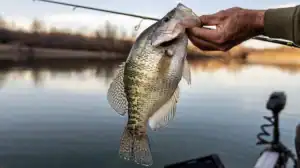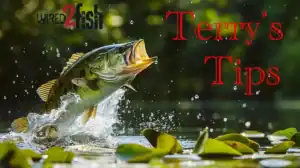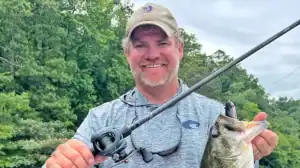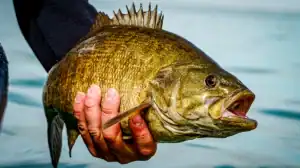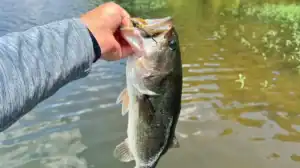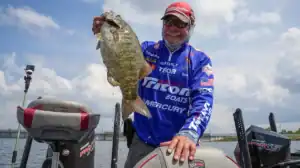Luke Clausen explains why the shaky head paired with a straight tail worm remains one of the country’s most reliable bass fishing techniques. While often considered a finesse option, Clausen proves that this rig’s versatility makes it effective in both pressured and tough bite scenarios, especially around grass and other forms of light cover.
The key to success with his setup lies in using a buoyant worm that stands upright on the bottom. Clausen’s top pick is the Z-Man SHM Worm paired with the companion Z-Man SMH Jighead, which features a pointed nose that fishes clean in and around vegetation. This setup allows the bait to subtly shake in place and draw bites from reluctant bass.
TACKLE USED
- WORM – Z-Man SHM Worm: Buy at Bass Pro Shops | Buy at Tackle Warehouse | Buy at FishUSA
- JIG HEAD – Z-Man SMH Head: Buy at Bass Pro Shops | Buy at Tackle Warehouse | Buy at FishUSA
- BRAIDED LINE – Seaguar Smackdown Flash Green, 15-pound: Buy at Bass Pro Shops | Buy at Tackle Warehouse | Buy at FishUSA
- LEADER LINE – Seaguar Tatsu Fluorocarbon, 10-pound: Buy at Bass Pro Shops | Buy at Tackle Warehouse | Buy at FishUSA
Ideal Conditions For Fishing A Shaky Head
Even though Clausen is fishing hydrilla—a location not typically associated with shaky head techniques—he shows how the right jighead and line combo make this tactic viable. He uses a 15-pound braided mainline paired with a 10-pound fluorocarbon leader to maximize sensitivity and control. The braid’s low stretch and smaller diameter help deliver immediate feedback, especially when fishing with light jigheads in deep or grassy water.
Why This Technique Belongs In Every Tackle Bag
For Clausen, the shaky head isn’t just a finesse option—it’s a critical fallback when conditions get tough. Whether you’re fun fishing or trying to avoid a blank during a tournament, a shaky head rig can generate bites when other lures fail. He emphasizes that even when it doesn’t catch giants, it often fills limits and saves the day.
If you want to increase your catch rate or find a consistent way to get bites when bass are stubborn, the shaky head with a straight-tail worm is a must-have in your bass fishing arsenal.


